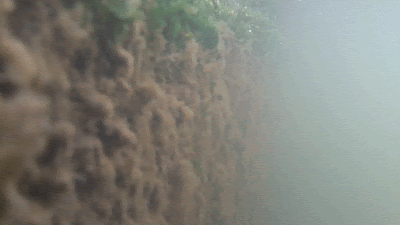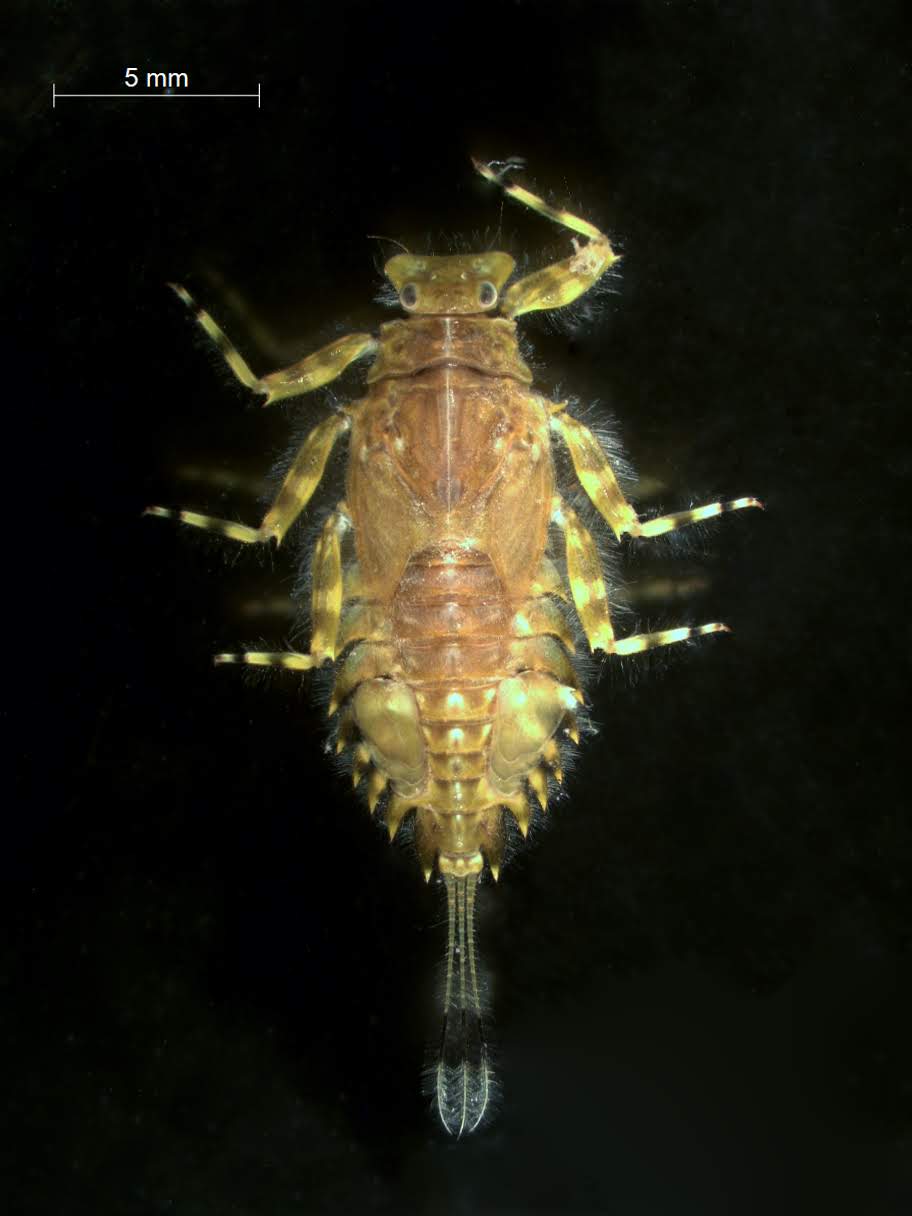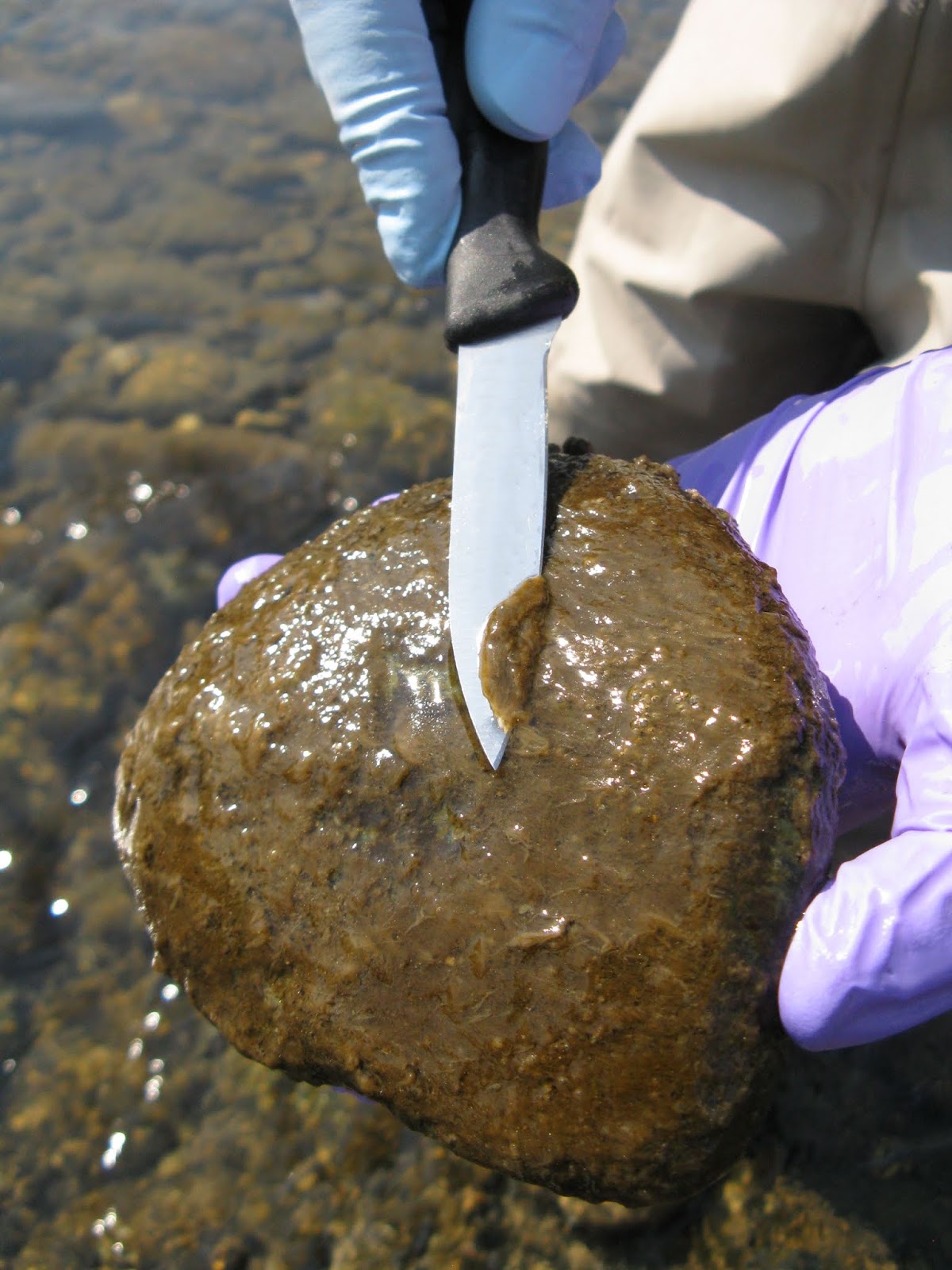Visit our SoundCloud channel for an audio description about using slime on river rocks as a forensics tool.
Rock slime: What is it good for?
We’ve all been there. You’re having a nice day playing in the water at your local lake or river, and all of the sudden you slip on a slimy rock! That slick, brownish goop squelches between your toes, and next thing you know, you’re falling backwards into the water.
Sleuthing out the slime
"Biofilm is a broader term that refers to both the living communities [like algae] and the dead things that build up on rocks over time,” said Hobbs.
As biofilm accumulates on river rocks, it slowly absorbs or takes up chemicals from the water. Hobbs and his team scrape the biofilm off rocks in order to test for various chemicals. They may also install plastic sheets on the bed of the stream, where biofilm can grow and be sampled. Either sampling approach allows them to study the chemicals that are present in a particular area.
A dense biofilm mat moving with the current.
- Polychlorinated biphenyls (PCBs) — legacy industrial chemicals.
- Polybrominated diphenyl ethers (PBDEs) — flame retardant chemicals in household products.
- Metals (copper, zinc, lead, arsenic, and cadmium).
The slime is greener on the other side
Mayfly nymphs like this one are sensitive to changes in water quality.
For example, the research team found that certain metals in the biofilm can affect the types of insects that live in a particular environment. “We use the presence and absence of aquatic insects [as a way to measure] the health of the stream.” If certain insects are missing, there may be a chemical in the water and biofilm deterring them from living there.
In pursuit of cleaner slime
Biofilm on a rock in the Wenatchee River, Washington.
If you would like to read the full paper, please contact the author William Hobbs.




